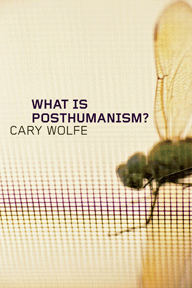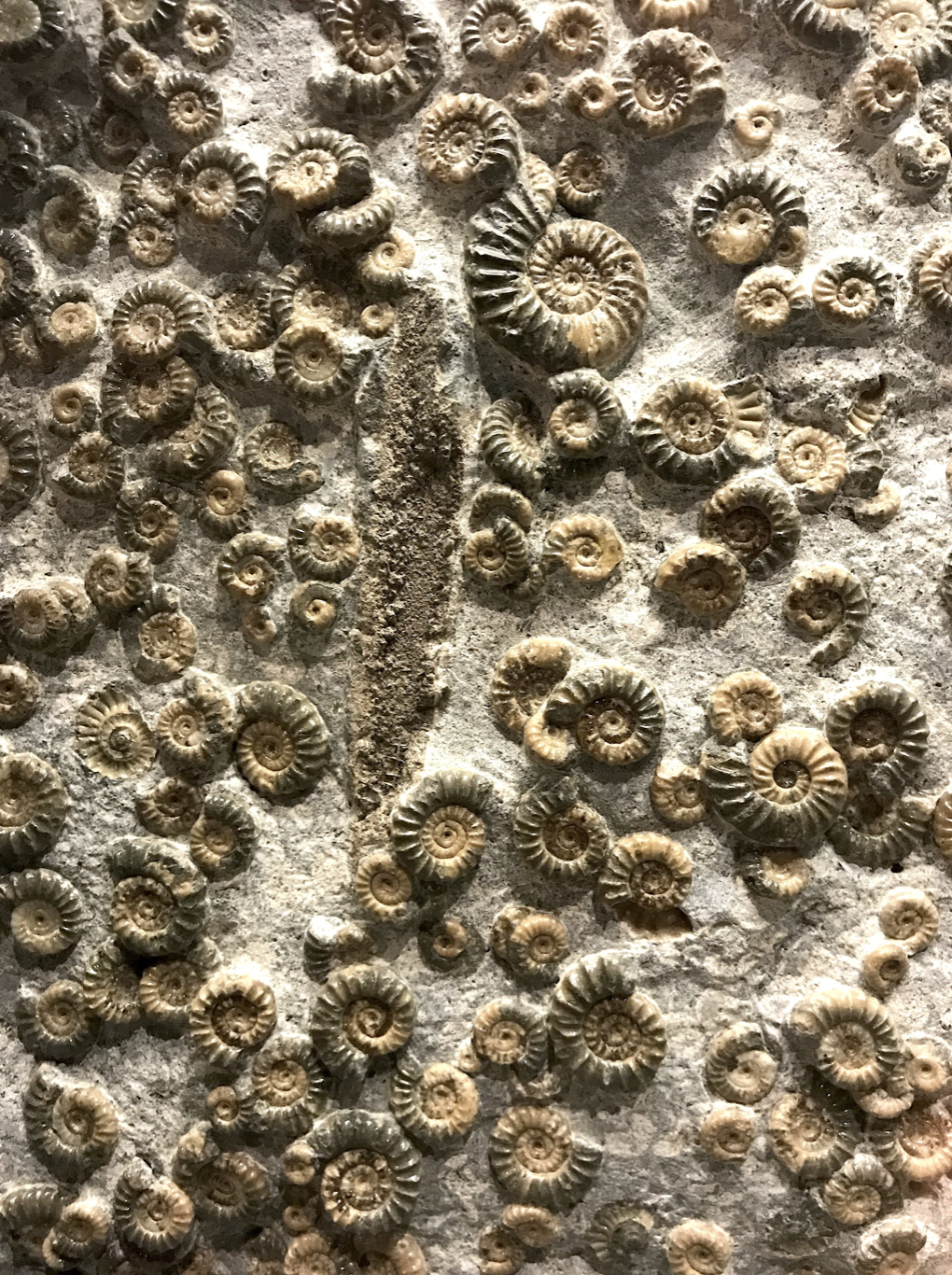Perhaps you have had a nightmare in which you fell through the bottom of your known universe into a vortex of mutated children, talking animals, mental illness, freakish art, and clamoring gibberish. There, you were subjected to the gaze of creatures of indeterminate nature and questionable intelligence. Your position as the subject of your own dream was called into question while voices outside your sight commented upon your tenuous identity. When you woke, you were relieved to find that it was only a dream-version of the book you were reading when you fell asleep. Maybe that book was Alice in Wonderland; maybe it was What is Posthumanism?
Now, it is not quite fair to compare Cary Wolfe’s sober, thoughtful scholarship with either a nightmare or a work of (children’s?) fantasy. It is a profound, thoroughly researched study with far-reaching consequences for public policy, bioethics, education, and the arts. However, it does present a rather odd dramatis personae, including a glow-in-the-dark rabbit, a woman who feels most at ease in a cattle chute, an artist of Jewish descent who implants an ID-chip in his own leg, researchers who count the words in a dog’s vocabulary, and horses who exhibit more intelligence than the average human toddler. The settings, too, are often wildly different from those you might expect in an academic work: a manufactured cloud hovering over a lake in Switzerland, a tree park in Canada where landscape and architecture blend and redefine one another, recording studios, photographic laboratories, slaughterhouses, and (most of all) the putative minds of animals and the deconstructed minds of the very humans whose ontological existence it seeks to problematize.
But that is another exaggeration. Wolfe’s goal is not to undermine the existence or value of human beings. Rather, it is to call into question the universal ethics, assumed rationality, and species-specific self-determination of humanism. That is a mouthful.
Indeed, Wolfe’s book is a mouthful, and a headful. It is in fact a book by a specialist, for specialists. While Wolfe is an English professor (at Rice University) and identifies himself with “literary and cultural studies” (p. 100), this is first of all a work of philosophy. Its ideal audience is very small, consisting of English and Philosophy professors who came of age in the 70s, earned their Ph.D.s during the hey-day of Derridean Deconstruction, and have spent the intervening decades keeping up with trends in systems theory, cultural studies, science, bioethics, and information technology. It is rigorous and demanding, especially in its first five chapters, which lay the conceptual groundwork for the specific analyses of the second section.
In these first five chapters, Wolfe describes his perspective and purpose by interaction with many other great minds and influential texts, primarily those of Jacques Derrida. Here, the fundamental meaning and purpose of “Posthumanism” becomes clear. Wolfe wants his readers to rethink their relationship to animals (what he calls “nonhuman animals”). His goal is “a new and more inclusive form of ethical pluralism” (137). That sound innocuous enough, but he is not talking about racial, religious, or other human pluralisms. He is postulating a pluralism that transcends species. In other words, he is promoting the ethical treatment of animals based on a fundamental re-evaluation of what it means to be human, to be able to speak, and even to think. He does this by discussing studies that reveal the language capacities of animals (a dog apparently has about a 200-word vocabulary and can learn new words as quickly as a human three-year-old; pp. 32-33), by recounting the story of a woman whose Asperger’s syndrome enables her to empathize with cows and sense the world the way they do (chapter five), and by pointing out the ways in which we value disabled people who do not possess the standard traits that (supposedly) make us human.
But Wolfe goes further than a simple suggestion that we should be nice to animals (and the unspoken plug for universal veganism). He is proposing a radical disruption of liberal humanism and a rigorous interrogation of what he sees as an arrogant complacency about our species. He respects “any variety of philosophy that challenges anthropocentrism and speciesism” (62)—anthropocentrism, of course, means viewing the world as if homo sapiens is the center (or, more accurately, viewing the world from the position of occupying that center) and specisism is the term he uses to replace racism. We used to feel and enact prejudice against people of different ethnic backgrounds, he suggests, but we now know that is morally wrong. The time has come, then, to realize that we are feeling and enacting prejudice against people of different species.
Although Wolfe suggests many epistemological and empirical reasons for rethinking the personhood of animals, he comes to the conclusion that our relationship with them is based on our shared embodiment. Humans and animals have a “shared finitude” (139); we can both feel pain, suffer, and die. On the basis of our mutual mortality, then, we should have an “emphasis on compassion” (77). He is not out to denigrate his own species – far from it. Indeed, he goes out of his way to spend time discussing infants (who have not yet developed rationality and language), people with disabilities (especially those that prevent them from participating in fully rational thought and/or communication), and the elderly (who may lose some of those rational capacities, especially if racked by such ailments as Alzheimers). Indeed, he claims: “It is not by denying the special status of human being[s] but by intensifying it that we can come to think of nonhuman animals…as…fellow creatures” (77).
This joint focus on the special status of all human beings along with the other living creatures roaming (or swimming, flying, crawling, slithering) the globe has far-reaching consequences for public policy, especially bioethics. Wolfe says that, currently, bioethics is riddled with prejudices: “Of these prejudices, none is more symptomatic of the current state of bioethics than prejudice based on species difference, and an incapacity to address the ethical issues raised by dramatic changes over the past thirty years in our knowledge about the lives, communication, emotions, and consciousnesses of a number of nonhuman species” (56). One of the goals of his book, then, is to reiterate that knowledge and promote awareness of those issues that he sees as ethical.
If you read Wolfe’s book, or even parts of it, you will suddenly see posthumanism everywhere. You can trace its influence in the enormously fast-growing pet industry. From the blog “Pawsible Marketing”: “As in recent and past years, there is no doubt that pets continue to become more and more a part of the family, even to the extent of becoming, in some cases, ‘humanized’.”
You will see it in bring-your-pet-to-work or bring-your-pet-to-school days. You might think it is responsible for the recent introduction of a piece of legislation called H.R. 3501, The Humanity and Pets Partnered Through the Years, know as the “HAPPY Act,” which proposes a tax deduction for pet owners. You will find it in children’s books about talking animals. You will see it on Animal Planet, the Discovery Channel, and a PBS series entitled “Inside the Animal Mind.” You will find it in films, such as the brand-new documentary The Cove, which records the brutal slaughter of dolphins for food. And you will see it in works of art.
Following this reasoning, section two of Wolfe’s book (chapters six through eleven) veers off from the strictly philosophical approach into the more traditional terrain of cultural studies: he examines specific works of art in light of the philosophical basis that is now firmly in place. Interestingly, he does not choose all works of art that depict animals, nor those that displace humans. He begins with works that depict animals (Sue Coe’s paintings of slaughterhouses) and that use animals (Eduardo Kac’s creation of genetically engineered animals that glow in the dark), but then moves on to discuss film, architecture, poetry, and music. In each of these examinations, he works to destabilize traditional binaries such as nature/culture, landscape/architecture, viewer/viewed, presence/absence, organic/inorganic, natural/artificial, and, really, human/nonhuman. This second section, then, is a subtle application of the theory of posthumanism itself to the arts, [our] environment, and [our] identity.
What is perhaps most important about What is Posthumanism remains latent in the text. This is its current and (especially) future prevalence. By tracing the history of posthumanism back through systems theory into deconstruction, Wolfe implies a future trajectory, too. I would venture to suggest that he believes posthumanism is the worldview that will soon come to dominate “Western” thought. And this is important for academics specifically and thinkers in general to realize.
Whether you agree with Cary Wolfe or not, it would be wise to understand posthumanism. It appears that your only choice will be either to align yourself with this perspective or to fight against it. If you agree, you should know with what. If you fight, you should know against what.
What, then, is the central thesis of posthumanism? Wolfe’s entire project might be summed up in his bold claim that, thanks to his own work and that of the theorists and artists he discusses, “the human occupies a new place in the universe, a universe now populated by what I am prepared to call nonhuman subjects” (47)—such subjects as talking rabbits, six-inch people, and mythical monsters?
Well, maybe not the mythical monsters.




